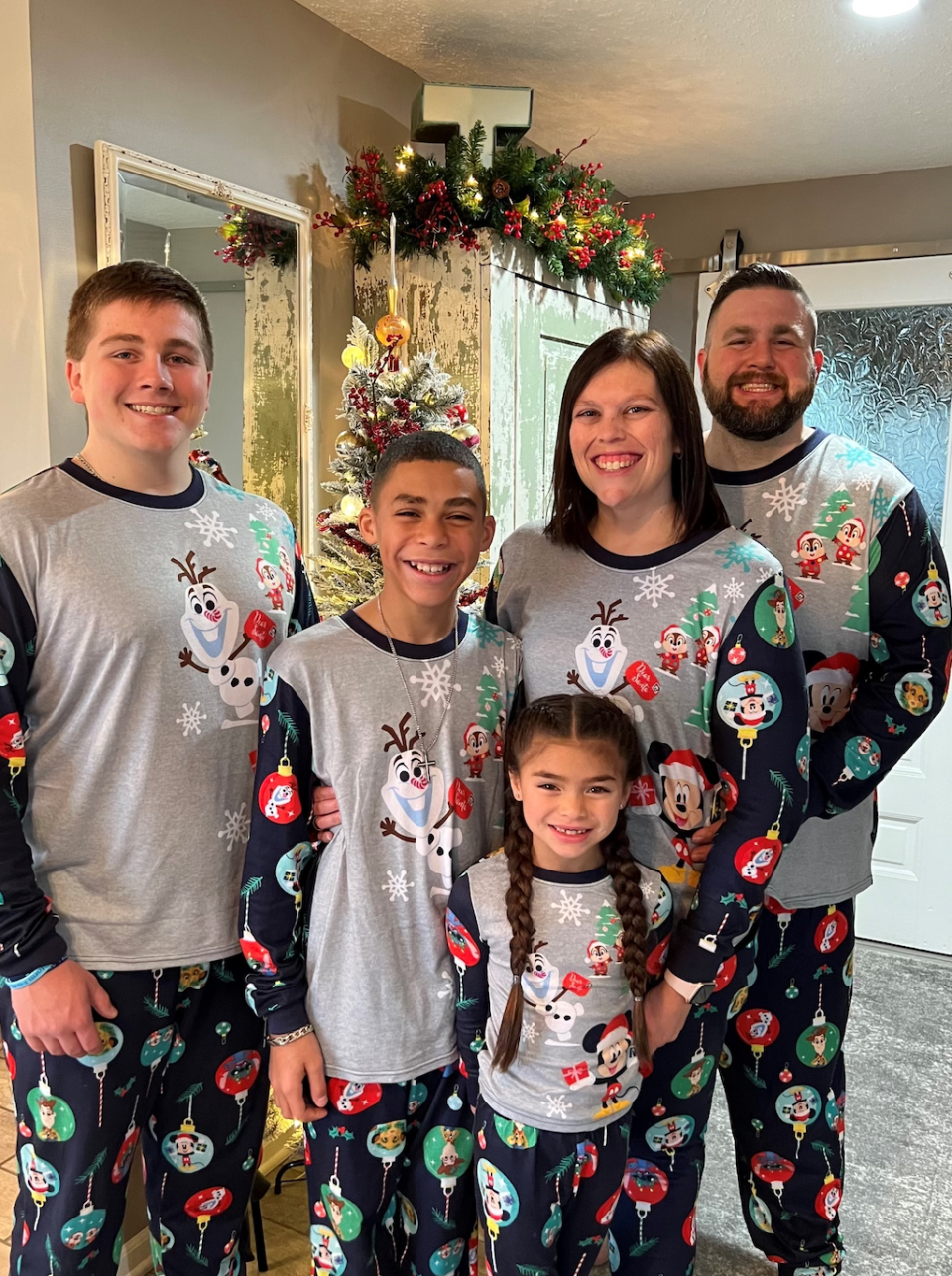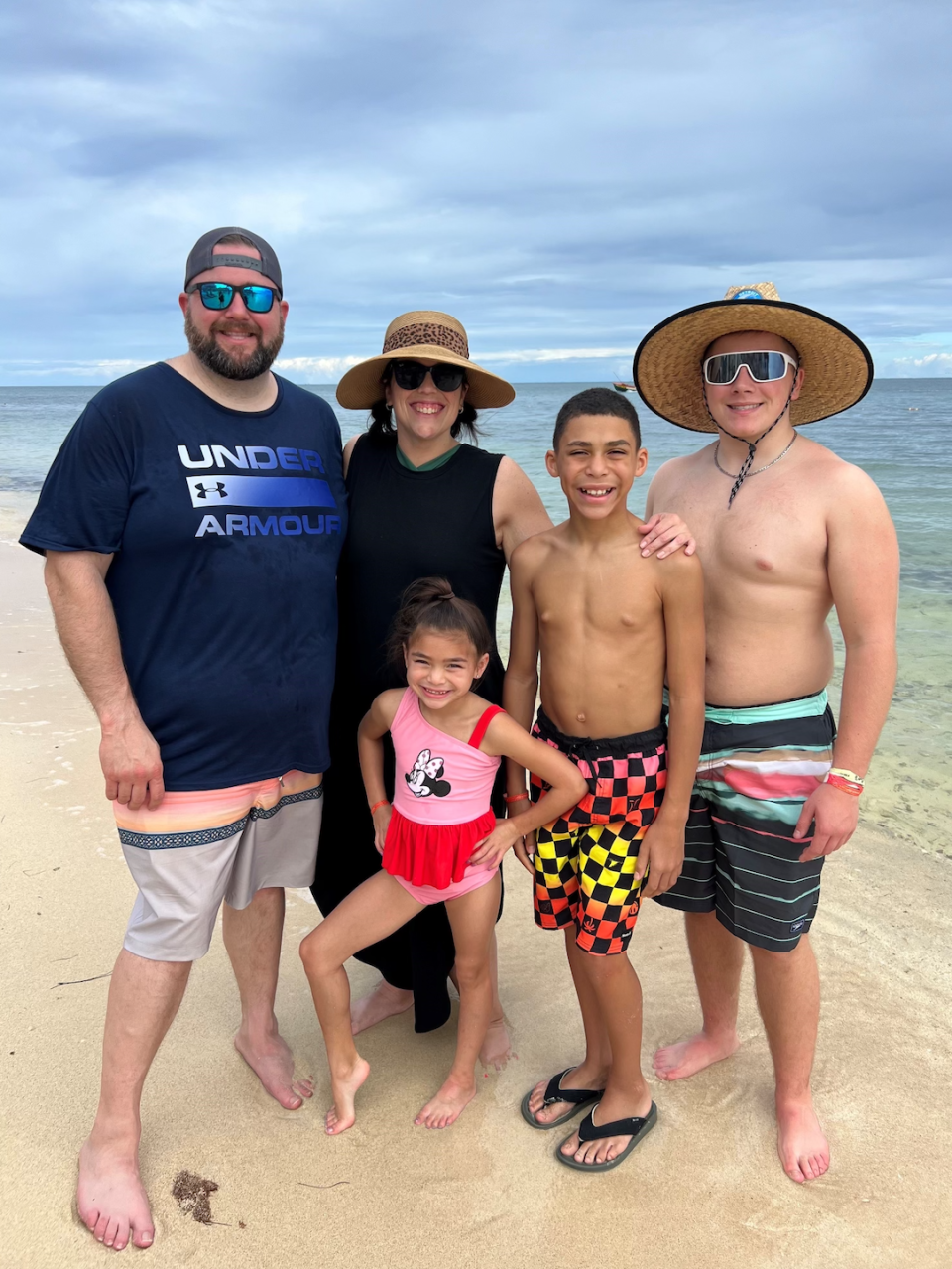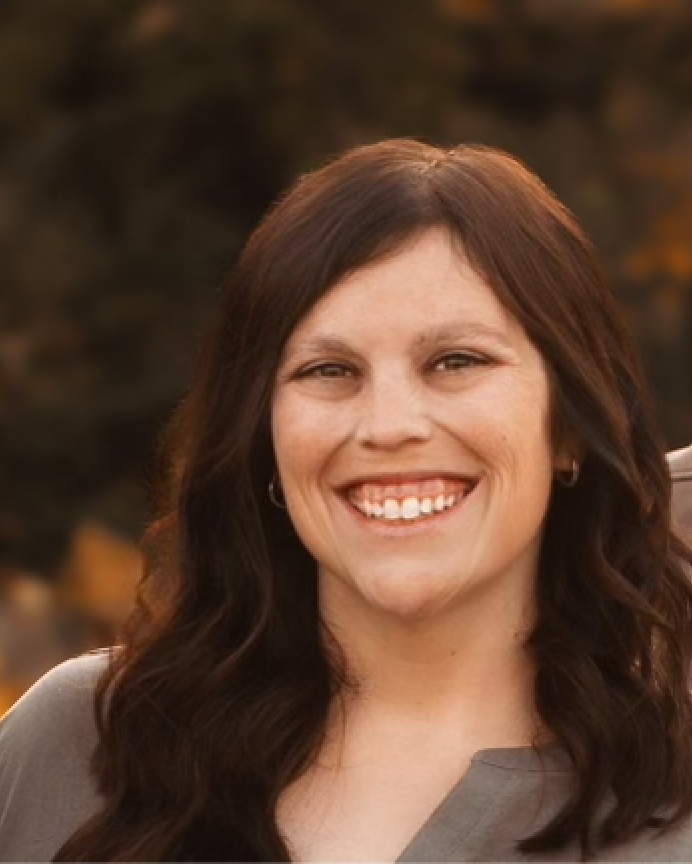This woman has ALS. So did 22 of her relatives. What she wants you to know.
- Oops!Something went wrong.Please try again later.
Jessica Morris' knee started buckling back in March 2022 while she played with her daughter at the park. "Well, that's kind of odd," she thought. Maybe she needed to up her exercise routine. But when her symptoms intensified, the day she dreaded arrived: A visit to her family's neurologist at Northwestern University.
A genetic test confirmed it the following October: Morris had ALS – just like 22 other people in her family with the hereditary SOD1 ALS gene. ALS is short for amyotrophic lateral sclerosis, a terminal neurodegenerative disease you might know as Lou Gehrig's disease. By December, she required a foldable, mechanical wheelchair and resorted to crawling up the stairs to her bedroom.
"At that point, we knew what we were dealing with," the 36-year-old from a small farming community in Illinois says. When she was 6 years old, her father died in August 1994 in his early 30s after a nearly year-long battle with ALS. Nearly 5,000 new patients are diagnosed with ALS each year, per the CDC. May is ALS awareness month.
Devastated by her diagnosis, she started thinking about her short-term future, including a Disney Cruise with her husband and their three kids. At least she didn't need to worry about her kids carrying the gene because they are adopted. As her husband put it: "'We don't have to live ALS every day. You have ALS, but you don't have to live it every day.' And we really stuck by that. And maybe that won't work for everyone. But for us it does."
But, as Morris' doctor put it, "this isn't your dad's ALS." Treatments, studies and research are giving patients hope in 2024. And for the 2% of patients with the SOD1 gene, one new medication – Qalsody (tofersen) – is offering more hope than ever. It's actually slowing the disease down in some people like Morris and, anecdotally, may even make them better.
"That's extraordinary, because most most people in this field never believed we could do that," says neurologist Dr. Richard Bedlack of Duke University, head of the Duke ALS Clinic. "They believed the best we might be able to do is slow the disease down. But it's pretty clear now that this disease can be stopped or even reversed if we hit the right target."

'Your leg is stronger than when you started'
After Morris started receiving monthly injections of Qalsody that December, she was walking up the stairs again by May of last year. Now she doesn't use a wheelchair at all. She didn't even need one on that Disney Cruise and climbed up and down a ladder in the middle of the ocean with her kids.
Her doctor was floored: "She even said, she's like 'your leg is stronger than when you started.' Which is just like, amazing." Her nurses, too: "They see all of these ALS patients without a positive prognosis. So it's nice to see someone that's improving and doing better."
People rarely associate ALS patients with such stark improvements; it's is in a similar category to Alzheimer's disease, Parkinson's disease and Huntington's disease, according to Dr. Jonathan Glass, director of the Emory ALS Center. The average age of onset is about 60 years old, and some also receive a concurrent frontotemporal dementia diagnosis.
It presents differently in all patients, though typically shows up as weakness in hands and feet. About one-third of people start with slurred speech and have difficulty swallowing, and a small percentage have difficulty breathing. Patients ultimately die of ALS because they can't breathe.
The prognosis, too, varies. You're likely to live about three to five more years once diagnosed, but some live past seven years and others live decades. Still, some still don't live up to two years, like Morris' father.
Morris still struggles, of course. "I'm not trying to say I don't have limitations because I do," Morris explains. "I walk with a cane. Uneven surfaces are not good for me. I'm not roaming around my lawn, for fear of a hole or something. But otherwise, I am so much more independent. I went to Walmart and Aldi the other day and walked through both of 'em by myself. That's huge for me."
More on ALS: What is ALS, the rare disease making it 'impossible' for Roberta Flack to sing?
How is ALS treated?
Generally, several medications treat ALS, including riluzole, which can increase life expectancy by 25%. Doctors may also prescribe medicine to treat symptoms like leg swelling, fatigue and depression.
Plus, "we have fantastic wheelchairs now that can be moved with just a movement of your head," Glass says, adding, however "we can't stop the disease at this point."
The only exception to that? Qalsody, though only for that small percentage with the SOD1 gene.

ALS specialists remain hopeful for more advancements: "Everything we try is just a little bit more likely to stick as compared to what we did a year before or a little further away," says Dr. Bjorn Oskarsson, director of the ALS Center of Excellence at the Mayo Clinic in Jacksonville, Florida. The Ice Bucket Challenge from 2014 galvanized awareness around the country, which led to research grants; drug companies, too, have realized there's money to be made in rare disease drugs, according to Dr. Shafeeq Ladha, neurologist and a professor in the Department of Neurology at Barrow Neurological Institute.
'We're talking about saving my life'
Only 10% of ALS cases run in families. It's otherwise sporadic. In Morris' case, 22 people in her family (including second cousins, etc.) have the SOD1 gene; you have a 50% chance of having the gene if one of your parents does. Morris is one of six people in her family receiving treatment right now.
While 22 people seems like a lot, it sounds right for people with a genetic form of ALS. "If you're carrying one of these highly pathogenic mutations, you probably have 22 people in your family that have had it," Glass says. "But you just don't know about it."

Morris recommends talking to your doctor to see if genetic testing is right for you if you have something like ALS in your background. But she knows not everyone wants that burden of knowing about a life-altering, terminal diagnosis.
Now, Morris' optimism shines through a video call as she recalls her doctor's words: "She hopes for a future that we're not talking about making me live longer, or prolonging my life, we're talking about saving my life."
This article originally appeared on USA TODAY: ALS disease, symptoms: What this improving patient wants you to know

